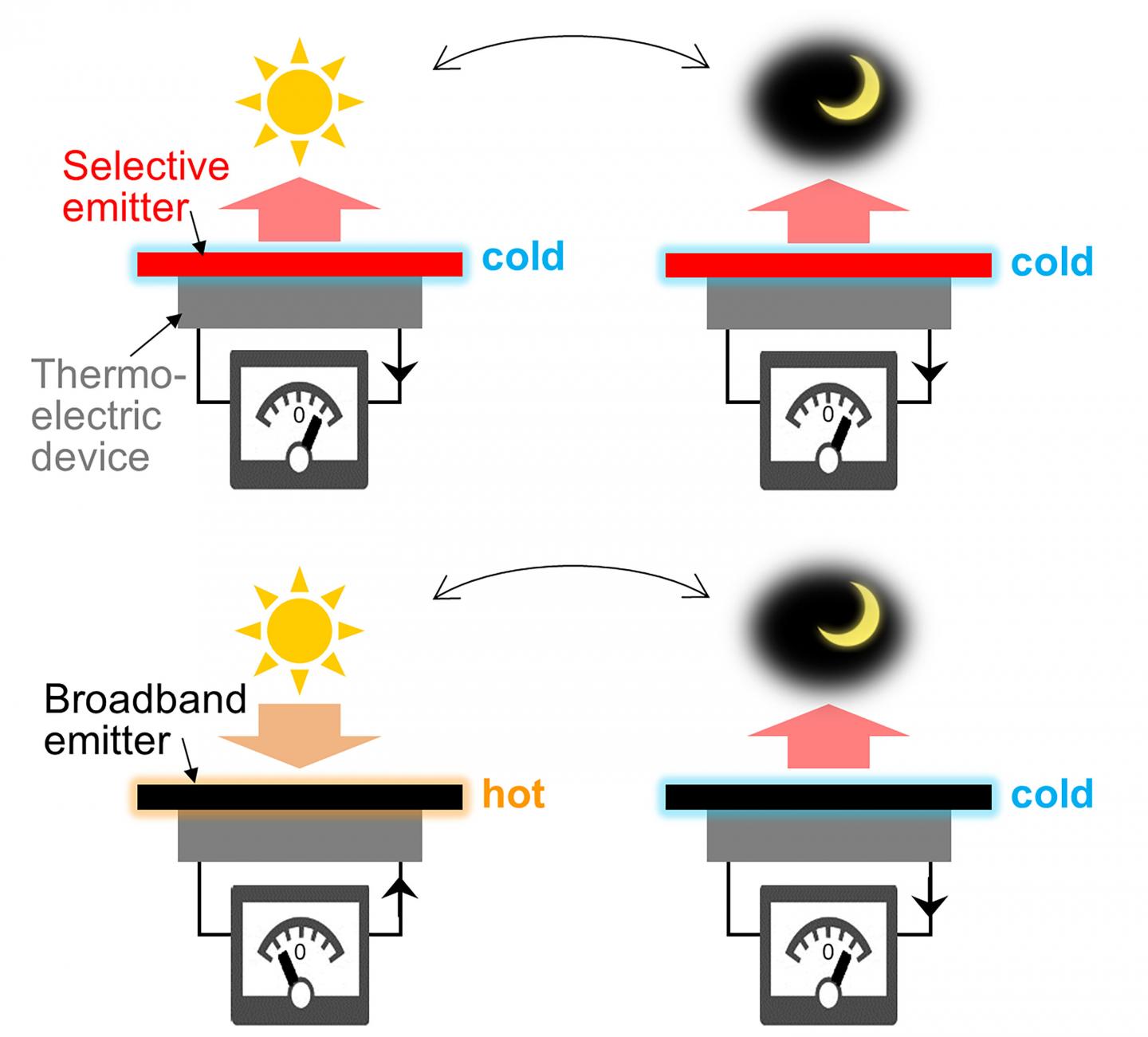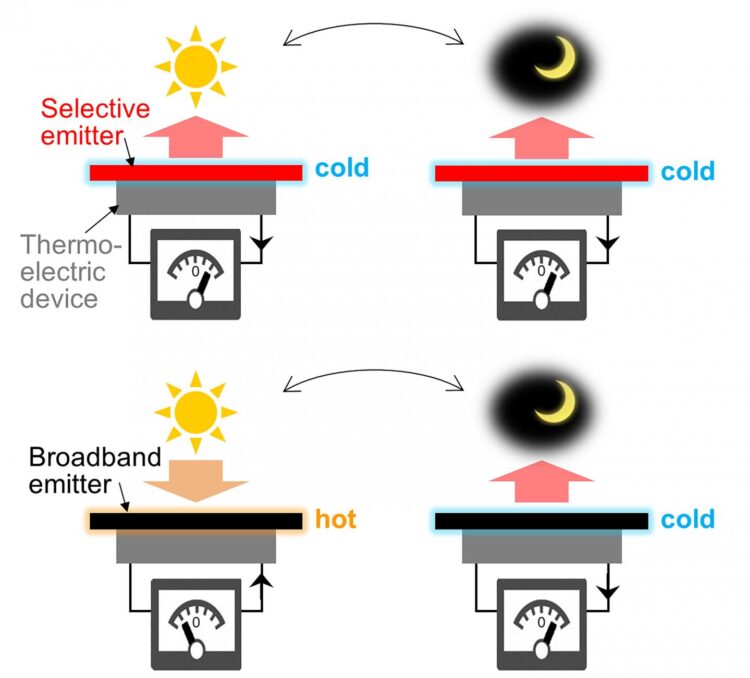With the use of a wavelength-selective emitter to create constant radiative cooling, thermoelectric devices can generate voltage continuously

Credit: Satoshi Ishii
WASHINGTON, July 7, 2020 — Sensors placed in the environment spend long periods of time outdoors through all weather conditions, and they must continuously power themselves in order to collect data. Many, like photovoltaic cells, use the sun to produce electricity, but powering outdoor sensors at night is a challenge.
Thermoelectric devices, which use the temperature difference between the top and bottom of the device to generate power, offer some promise for harnessing naturally occurring energy. But, despite being more efficient than photovoltaics, many thermoelectric devices flip the sign of their voltage, meaning the electrical current changes the direction of its flow, when environmental temperatures change, so the voltage drops to zero at least twice a day.
“The sign of the thermoelectric device depends on the temperature difference between the top and bottom of the device,” author Satoshi Ishii said. “Cooling can be used to create a temperature difference compared to the ambient temperature, and if there is a temperature difference, thermoelectric generation is possible.”
In a study published this week in Applied Physics Letters, by AIP Publishing, the authors tested a thermoelectric device made up of a wavelength-selective emitter that constantly cools the device during the day using radiative cooling, the dispersion of thermal energy from the device into the air. As a result, the top of the device is cooler than the bottom, causing a temperature difference that creates constant voltage through day and night and various weather conditions.
The authors compared a broadband emitter with a selective emitter, showing the selective emitter avoids the problem of the voltage dropping to zero during environmental changes in temperature.
“For the selective emitter, it is best to have emissivity close to unity in the atmospheric window, approximately 8 to 13 micrometers, where the atmospheric transmittance is high and thermal emission can effectively radiate into space, which in turn cools the device,” Ishii said.
The device they tested is comprised of a 100-nanometer-thick aluminum film on the bottom of a glass substrate. The authors discovered that other sources of heat, such as the roof where a sensor might be mounted, can augment its ability to generate voltage.
“A large temperature difference results in a large thermoelectric voltage,” Ishii said. “Using the heat on the backside of the device makes the temperature difference between the bottom and top larger, so heat from behind the device is beneficial for thermoelectric generation.”
###
The article, “Radiative cooling for continuous thermoelectric power generation in day and night,” is authored by Satoshi Ishii, Thang Duy Dao and Tadaaki Nagao. The article will appear in Applied Physics Letters on July 7, 2020 (DOI: 10.1063/5.0010190). After that date, it can be accessed at https:/
ABOUT THE JOURNAL
Applied Physics Letters features rapid reports on significant discoveries in applied physics. The journal covers new experimental and theoretical research on applications of physics phenomena related to all branches of science, engineering, and modern technology. See https:/
Media Contact
Larry Frum
[email protected]
Related Journal Article
http://dx.





